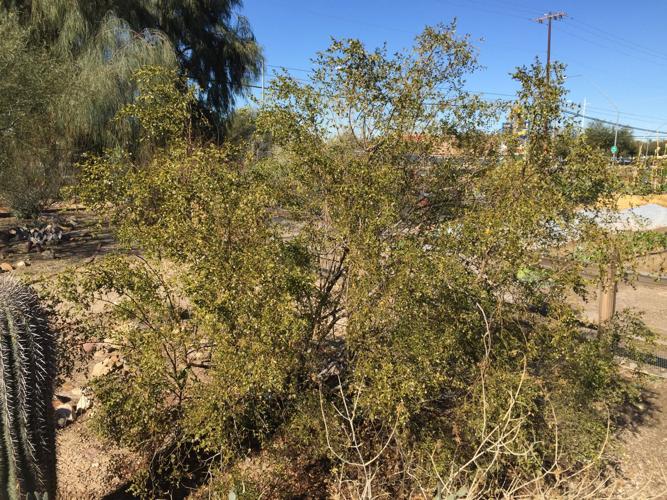Q: We bought what we believe to be an Arizona mesquite around April of last year. It was transplanted right away and watered about once a week, as the nursery worker said it didn’t need much water.
Fast forward to around September or October and the leaves started to turn yellow and brown. New leaves were still growing, and they were coming in green.
During the winter the leaves fell and we’re still waiting for new leaves to grow.
After checking for green under the bark and seeing if the branches snap off, it seems as though the little tree is still alive — barely. Any tips on getting it to grow or how to keep it alive?
A: It seems you took care of the tree properly although I am not sure how much water you gave it. Mesquites normally shed some leaves in the fall but they also shed leaves if they are too dry. If your tree is still bare now, it may not have received enough water.
People are also reading…
Assuming it is still alive, the best you can do is to water it properly. That means once every two to three weeks now that the tree is established. The water should reach a depth of 24 inches and drip irrigation around the root zone is best.
Q: My lot in Picture Rocks has lots of creosote plants, a couple of which I need to remove for access. I was wondering, since creosote used to be a wood preserver, is it safe to chip up the branches (for me and other plants in the yard) safe to compost and so on?
A: Yes, it is safe to use creosote as a mulch or compost. Once any trees and shrubs are chipped for mulch or ground up for compost, they are organic matter like any other plant and will eventually provide a slow release nitrogen source for your garden or landscape.
In the short term, mulch is a good way to moderate temperature extremes in root zones and maintain soil moisture a bit longer than bare soil.
Q: Seedpods drop from trees in the parking lot in front of the Target store in Oro Valley, but we have been unable to identify what kind of trees they are. Can you help?
Answer: Your seedpods are from the Australian bottle tree (Brachychiton populneus). This is a large evergreen shade tree that can reach 60 feet in height.
These trees do well in full sun in our arid environment with sufficient water. T
he seedpods are sometimes considered messy because they decay very slowly and can be numerous on the ground.
Q: A mesquite tree beside my driveway is getting new leaves, but I noticed a couple of dead branches among the greenery. They snapped off easily at a point where they appeared to have been neatly girdled. Does some kind of critter do that, and why?
A: Yes, the critter is commonly known as the mesquite twig girdler (Oncideres rhodostica). It is a long-horned beetle, about an inch long, that is native to our area and not considered to be a pest.
The female of the species does the girdling and then lays her eggs out beyond the girdle. The larvae feed on the nutritious cambium layer under the bark.
The nice way to think of this damage is as nature’s way of pruning your tree.
Q: I have a big mesquite tree that we planted in our front yard about 30 years ago and it has looked good except for the mistletoe, which we trim off every year.
Now the bark is peeling off. Do you know why that’s happening and is here anything we can do to stop it?
A: Bark peeling is sometimes a sign of drought. We are in the midst of a 20-plus year drought and even tough mesquites will eventually succumb to that if not given supplemental water.
This is especially true of trees in our landscapes because they are often placed in situations where they would not grow naturally.
Peter L. Warren is the Forest Health Program Coordinator for the Arizona Department of Forestry and Fire Management. Questions may be emailed to










